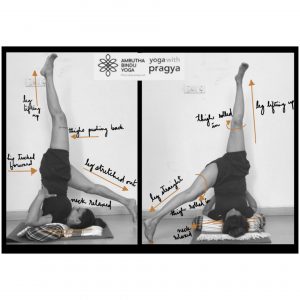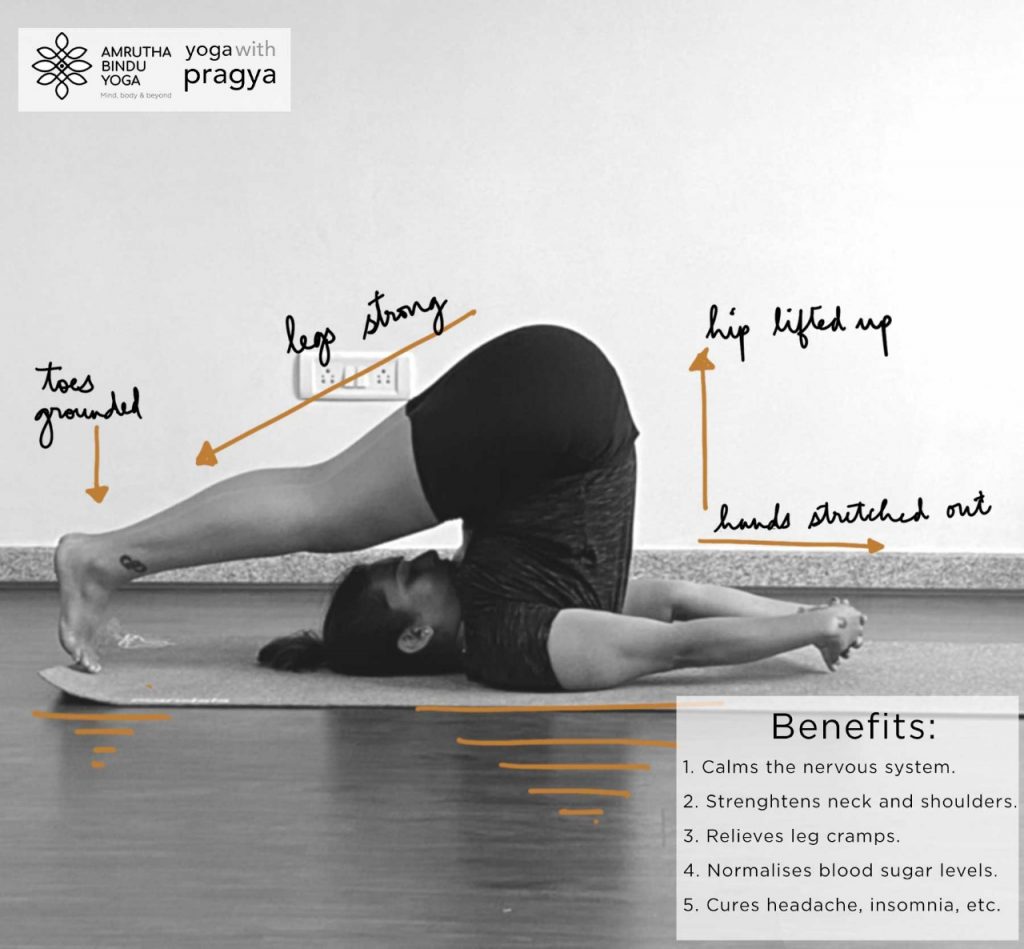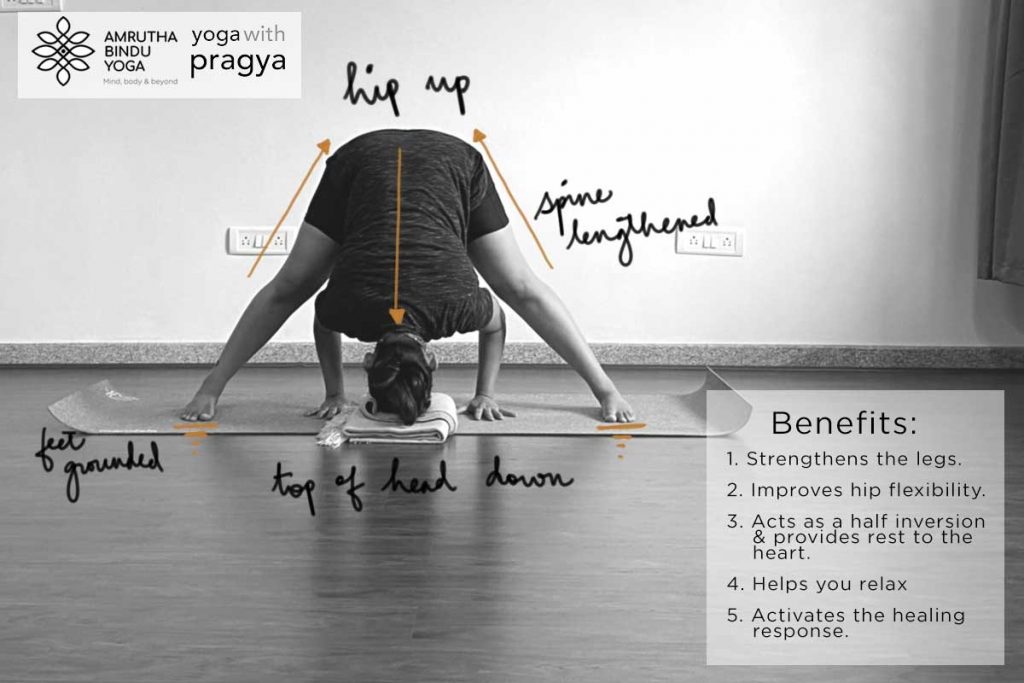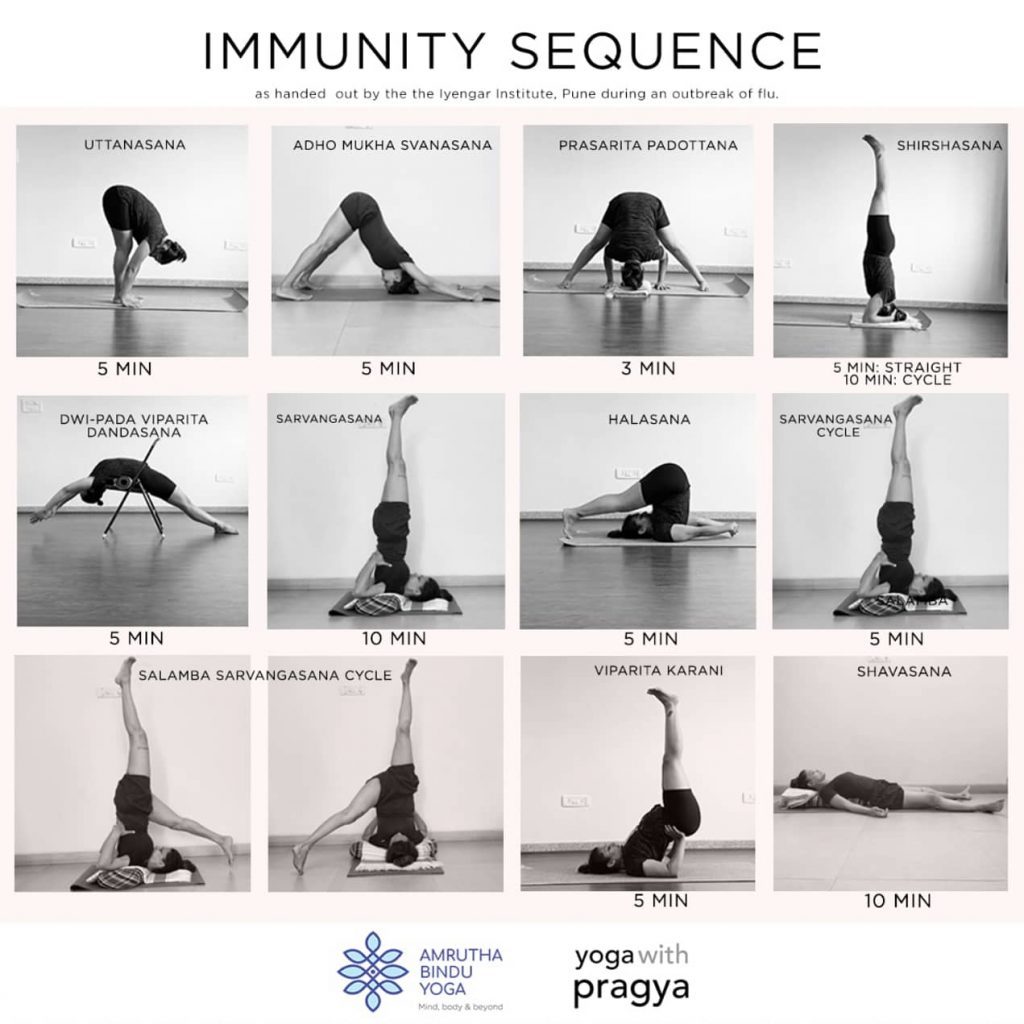It is one of the greatest boons conferred on humanity by our ancient sages. (Light on Yoga p 212)
Sarvangasana variations comprise the ‘Sarvangasana cycle’. The immunity sequence comprises of :
- Eka Pada Sarvangasana : In this variation (shown on the left), one leg is brought down to rest on the floor similar to Halasana. The other leg should be absolutely straight. This posture draws upon the the flexibility of the hamstrings and the strength of the quadriceps muscles too.
- Parsvaika Pada Sarvangasana : In this variation (shown on the right), one leg is brought down to the side of the body, diagonal from the trunk. As with all Sarvangasana variations, this requires control and strength of the core muscles, but this variation also requires an flexible hip joint.
We perform these variations to gain more control over our bodies. They require us to use more of our core strength, or cultivate the necessary core strength. All Sarvangasana variations are great to tone and strengthen the muscles of the legs and are a boon for the kidneys.
Contraindications
The contraindications that apply for Sarvangasana apply to the variations as well.
Busting the Myths
When students first start practicing these variations there is a rush to touch the toes to the floor. This compromises the alignment of the raised leg. Read on for some practice pointers.
Practice Pointers
- The variations can be performed after staying in the Sarvangasana for 5-10 minutes.
- Do them for 30 seconds on each side.
- If your leg doesn’t reach the floor use a stool or chair under it (see video).
Stay tuned for more from our Yoga to Boost Immunity Sequence.
Download the Daily Yoga Practice Checklist.
Follow Amrutha Bindu Yoga here.
Follow Medha Bhaskar here.
Follow me (Pragya Bhatt) here.



